#1970’s candy
Text

Candy Samples
1970s
21 notes
·
View notes
Text

If they would just take out the damn walnuts these would be perfect.
Reader's Digest - November 1972
#candy#aplets#1972#vintage ad#advertising#advertisement#Christmas gifts#Christmas ad#Vintage Christmas#Christmas#Xmas ad#xmas#1970s#1970s ad#1970's#1970's ad#funny#humor#humour
21 notes
·
View notes
Text

#Collection on 1970's mail-order magazine nose candy paraphernalia. Nice#Neat#Tout de Suite.#CheetahCoolidge#oldschool
13 notes
·
View notes
Text
guys im hyperfixating so much on Willy Wonka and the chocolate factory pls pls pls send me asks with like idk prompts or imagines with that theming
#tbh I think I just need a partner as immensely autistic and hyperfixated on candy as I am#candy maker feeder pls#Also before ppl ask I do prefer the 1970's one over the 2000's one#And I have not seen the Broadway show and don't intend to
14 notes
·
View notes
Text
Shoujo Manga's Golden Decade (Part 3)
Shoujo manga, comics for girls, played a pivotal role in shaping Japanese girls’ culture, and its dynamic evolution mirrors the prevailing trends and aspirations of the era. For many, this genre peaked in the 1970s. But why?
Part 1
Part 2
Follow the Trend
Before we move on to the third movement of the '70s, let's take a quick look at an essential characteristic of shoujo manga: its sensitivity to trends.
The early '70s were a confusing time for the industry. There was extreme freedom in certain corners, with Yukari Ichijo, Machiko Satonaka, and other prominent artists drawing very adult-like drama in shoujo magazines for young girls. In contrast, there was also a lot of moralism. The fact manga wasn't taken very seriously meant magazines could get away with a lot since adults considered them terrible influences anyway. But, at the same time, since manga wasn't a respected medium, they were also prone to hysteria. Nothing illustrates this scenario better than the controversies surrounding "Harenchi Gakuen," the first full-length series by Go Nagai, who went on to become one of the most celebrated manga names in the '70s.


Shameless! The nudity and erotic jokes in Go Nagai''s "Harenchi Gakuen" were a hit with kids and teens, scandalized parents and teachers, and made the shoujo industry chase after their own erotic hits.
Nagai, already a respected yet fledgling name in the industry, was recruited by Shueisha to be part of Shonen Jump's inaugural team in the late '60s. Jump, as any manga fan knows, is by far the biggest success story in manga editorial history. However, back then, it was just a newcomer in a field dominated by Kodansha's Weekly Shonen Magazine and Shogakukan's Shonen Sunday. Go Nagai's series, whose translated name meant "Shameless High School," is Jump's first big hit and one of the titles that propelled the magazine to sell over 1 million copies.
But "Harenchi Gakuen," a gag manga with erotic jokes, scandalized adults across the nation. The Japanese Parents and Teachers Association successfully led a Shonen Jump boycott, getting the magazine banned in several shops across the country and triggering a media circus. At the time, agitated journalists often accosted Go Nagai at airports and public events, aggressively pointing their mics at him, a consequence of manga-kas celebrity-like notoriety during that era.
Meanwhile, the reaction around "Harenchi Gakuen" did not intimidate other manga magazines. In fact, all of them were pursuing their own "harenchi"-like phenomenon and publishing stories with erotic dirty jokes. And yes, that included the manga magazines for little girls. In Ribon, male manga-ka Hikaru Yuzuki was responsible for the "dirty" manga series. At Weekly Margaret, Yuzuki also had a considerable hit with the high school comedy "Elite Kyousoukyoku," which, while not precisely "ecchi," had a tone reminiscent of Nagai's work. At Nakayoshi, the artist in charge of this type of content was none other than a pre-"Candy Candy" Yumiko Igarashi.

Before finding success with the smash hit "Candy Candy" manga, Yumiko Igarashi was the Nakayoshi artist in charge of recreating the "harenchi" phenomenon in the pages of the magazine. Above, in a good display of how public manga artists were in the '70s, Yumiko describes her panties as part of a Nakayoshi feature.
The "harenchi" phenomenon hinted at a shoujo field that wasn't yet wholly solidified and, therefore, was taking cues straight from the shonen segment, which would later become uncommon. But it is also an example of how the genre projects readers' dreams and preferences.
An example of this is one of Ribon's most popular series during the '70s, Yukko Yamamoto's "Miki to Apple Pie," a gag high school manga full of absurd humor and nudity in the "Harenchi" vein. The twist is that it also had everything girls dreamed of.
The "apple pie" in the title was a reference to the lead character's favorite dessert during the time the American apple pie had just arrived in Japan and was considered the trendiest sweet. Miki Miyazawa, a popular and beautiful girl who served as the proxy for readers and was loosely modeled after talento Aki Aizawa, also loved astrology and the horoscope, and the romantic lead was a transfer student named Hideki Nanjo, who was a carbon copy of Hideki Saijo, the biggest popstar heartthrob of the '70s. Basically, "Miki to Apple Pie"'s central premise was "What if the popstars girls go crazy for was your silly gorgeous classmate?".
In fact, a testament to Saijo's popularity was how many shoujo manga romantic partners of the era used him as a model. Besides "Miki to Apple Pie," inserts of him were present in Satonaka Machiko's "Spotlight," Shigeko Maehara's "Kimi Iro no Hibi," Mayumi Yoshida's "Lemon Hakusho," among others.


With nudity, slapstick humor, and a lot of reference to trends and pop culture, "Miki to Apple Pie" was a massive hit on the pages of '70s Ribon. The romantic lead, Hideki Nanjo, inspired by heartthrob Hideki Saiji, would often do impromptu performances of the pop hits of the times from famous stars like Agnes Chan, Finger Five and, of course, Hideki Saiji himself.
Saijo is a relic of the past, but shoujo echoing the trends of its time is a timeless characteristic of the genre. That's why most shoujo artists are women who are close in age to their readers: this sensibility to girls' desires is a vital component of the market. From the way the characters look to how they dress to even the shape of their eyebrows, everything is supposed to reflect its time. Therefore, to successfully create shoujo, one has to understand how girls perceive themselves and also how they want to be perceived. How they dress and look, but also how and what they dream of looking and wearing. What they aspire to and, above all, what they find attractive in the opposite sex.
It was precisely that sensitivity and this unique sense of what girls want and dream of that led to the creation of what is now the number 1 shoujo manga trope: the high school romance starring an unassuming, ordinary heroine. Leading the way was another group of artists that, while not as internationally celebrated as the Year 24 Group, are definitely equally as crucial to shoujo history.
The Otometique Fervor

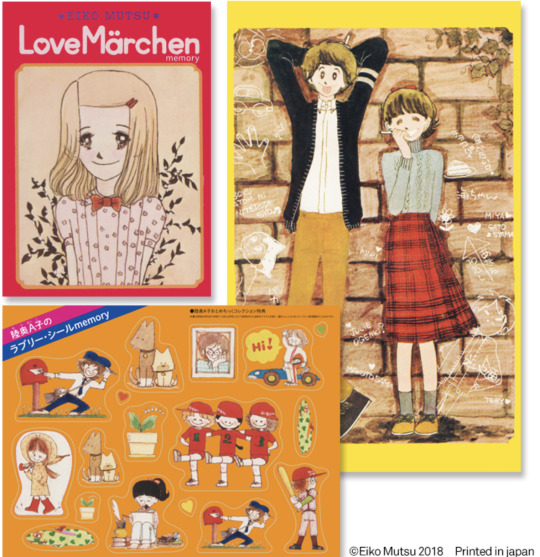
An "otometique" girl by Mutsu A-ko and some of the artist's popular furoku.
Yoshiko Nishitani, another of Shueisha's top shoujo artists of that era, is often credited as being the first to create a series around ordinary high school love. She did that in 1965's "Marie Lou," published in Weekly Margaret. "Marie Lou" was set in an American high school and had a very fashionable white girl as its lead. On her next manga, "Lemon to Sakuranbo" (Lemon and Cherries), she'd once again achieve immense success by bringing the teen romance closer to reality, using an ordinary Japanese high school as a backdrop.
While Nishitani pioneered this narrative style, the rise of more realistic, everyday stories gained momentum about a decade later. One catalyst for this was the "Otometique boom," a phenomenon that unfolded in the pages of Shueisha's Ribon magazine in the latter half of the '70s.
The term "Otometique" combines "otome," meaning "maiden" or a pure young girl, with the "-tique" (tikku in Japanese) suffix. A-ko Mutsu was the artist who spearheaded this movement.
A-ko made her debut in Ribon in 1971 at the age of 18. Her popularity skyrocketed four years later when her first short stories, led by "Tasogaredoki ni mitsuketa no" (What I Found at Twilight), were compiled into a tankobon that became a best-seller. This success elevated her status in Ribon, and soon her "otometique" style became the talk of the town.

Mutsu A-ko's art.
In contrast to the dramatic narratives of the "Satonaka-domain" faction, "otometique" stories adopted a more straightforward structure devoid of major plot twists and intense drama. Instead, they focused on modest love stories where the exhilarating moments were ordinary occurrences, like spotting a cute boy on the street or touching a crush's hand for the first time. While some stories included sad or supernatural elements, readers were captivated by the uncomplicated, heartwarming moments.
Ako's heroines were ordinary, unassuming schoolgirls, often characterized by shyness and insecurity. Different from extraordinary characters like Lady Oscar from "BeruBara" or the iconic Madame Butterfly tennis star in "Ace wo Nerae," Ako's protagonists were life-sized.
"Otometique" manga often incorporated romantic comedy tropes, such as chance encounters with cute guys on the way to school or the transformation into beauty after removing glasses. The happy endings typically featured a boy reciprocating the girl's love by accepting her as perfect and beautiful just as she was.

In otometique manga, girls were often in cute plaid and gingham check dresses and skirts, while boys were impeccably dressed in Ivy style, as seen in Mutsu Ako's art above.
While the stories may have seemed mundane, their distinctiveness lay in the meticulous attention to detail. As significant as the exploration of falling in love and discovering inner strength were all the visual details in "otometique" art. Girls had braids or long wavy hair and wore adorable clothes with plaids and gingham-check, as well as cute accessories. At a time when most Japanese girls still had Japanese-style rooms, "otometique" heroines had gorgeous Western-style rooms. They hung out in cozy cafes, made handmade goods, and ate tasty-looking sweets. Houses had French windows and balconies. Boys were tall, lean, with fluffy hair, and were always dressed impeccably in Ivy-style clothes. The "otometique" artists created an atmosphere that perfectly matched girls' aspirations at the time.
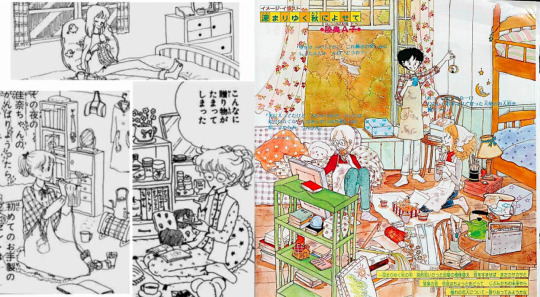
Girls often dreamed with having Western-style bedrooms like the ones in Otometique manga.
While Mutsu A-ko was the trailblazer, she was soon joined at the top by two other iconic artists, Yumiko Tabuchi, and Hideko Tachikake. Each of them had their quirks. Tabuchi, for example, often had college girls as her heroines, mirroring herself as a student at the elite, trendy Waseda University. While Tabuchi and A-ko preferred short stories, Tachikake had a penchant for longer series with a bit more drama. But they all had a similar aesthetic and relied on ordinary stories about love.
The "otometique" phenomenon reflected the trends of the time and foreshadowed the emerging consumer culture that would swallow the country in the next decade. The sophisticated visuals attracted people of all ages, from elementary school-aged girls to highly educated women and men. Both the top public and private universities in Japan, Tokyo University and Waseda, respectively, had famous "otometique" clubs full of students who loved the genre and the style. The mangas were so trendy they were often referred to as "Ivy mangas," in reference to the iconic Ivy style that was the catalyst of Japan's youth fashion which was going through a second revival around that time.
While projecting an atmosphere that girls dreamed of, "otometique" also showcases '70s youth and girls' culture. Melancholic, simple love stories among young people were also the theme of the big folk hits of the time. Ivy or country fashion and long hair for men were the trends. Western-inspired ideals- in decoration, fashion, and musical taste- were pervasive. And creating subcultures and hobbies around consumption was the path society was taking. Simple life-sized stories as a narrative preference echoed the reality of Japan, which was stabilizing itself after decades of turbulence. These stories brought what the country was craving: comfort.


Above, a Mutsu A-ko's bedroom that lived in girls' imagination. Below, the room is recreated in a 2021 exhibition of Ako's art.
Meanwhile, the rise of consumer culture among young girls led to a "fancy goods" boom, with stores selling cute stationery, stickers, and small items popping up everywhere around the country. Illustrators and companies, eager to capitalize, spared no time in creating appealing mascots and drawings to adorn these goods, and it was in that period that Sanrio created Hello Kitty.
Ribon and Nakayoshi, which were "furoku" magazines, also benefitted. Furoku are extra gifts that come with the purchase of the magazines. And the "otometique" boom meant Ribon could include "fancy goods" -- like notebooks, stickers, letter sets, and small paper goods readers could assemble -- with the illustration of these highly sought-after artists. Most girls around Japan could only dream of Western-style rooms, a closet full of cute Ivy fashion, trips to trendy cafes, and homes with French windows. But they could recreate a bit of this sophisticated atmosphere by having letter sets, notebooks, stickers, and small accessories with A-ko Mutsu, Hideko Tachikake, and Yumiko Tabuchi's art. These popular furokus and the "otometique" stories were critical for Ribon magazine to surpass 1 million copies in circulation.
Girls admired A-ko, Tabuchi, and Tachikake not only as artists creating heartfelt stories with attractive atmospheres but as personalities. The trio, who were in their late teens and early 20s, closely resonated with their fans due to their proximity in age and shared interests. The readers were moved when Ribon featured an article in which A-ko Mutsu had the opportunity to meet and interview her favorite singer, the rock star Kenji Sawada, a prominent teen idol of that era. The positive response was so overwhelming that, a few issues later, Hideko Tachikake, an avid folk music enthusiast, also had the chance to interview her idol, Kosetsu Minami, the lead singer of Kaguyahime.
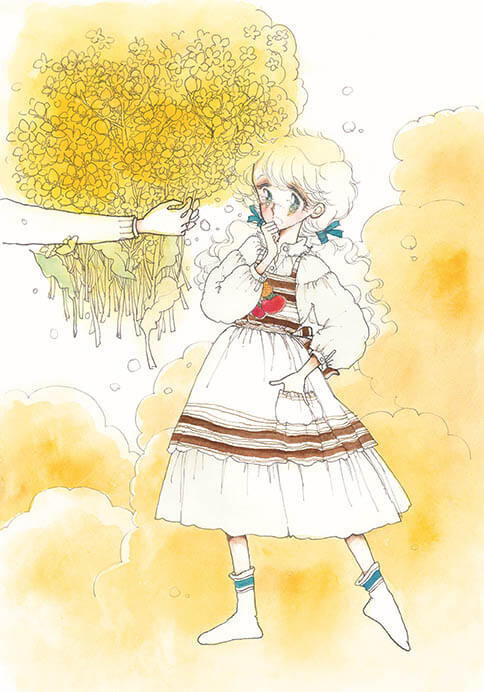
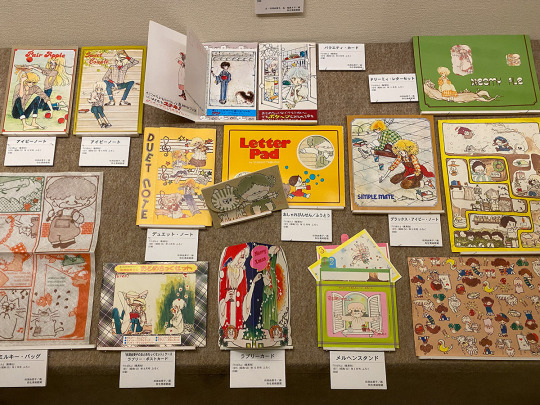
An otometique girl by Yumiko Tabuchi (left) and a collection of furoku illustrated by her as seen on a 2021 exhibition on her art.
The popularity of "otometique" peaked in 1977. By 1981, the boom had almost faded, and Ako, Tabuchi, and Tachikake published their last work on Ribon in 1985. Tabuchi and Tachikake married and semi-retired, while Ako successfully transitioned to manga for adult women.
Despite the end of the style, "otometique" permeated every corner of Japanese society. Its furoku and atmosphere were one of the bases for the almighty "kawaii" culture which now rules the country. The life-sized heroines and focus on mundane love stories and everyday emotions went on to become one of the main characteristics of the shoujo manga industry.
The Iwadate Domain
For years, the influence of "otometique" has been downplayed, one of the reasons why the movement is almost undiscussed in the West. However, in the last few years, best-selling books reminiscing the style were published, and exhibitions of A-ko Mutsu and Yumiko Tabuchi's works were big hits across Japan. Ako, who moved back from Tokyo to her hometown in Fukuoka and never stopped working on manga, was recognized by the local prefecture as an honorary citizen and gained a permanent museum in the area, signaling her importance to the industry.
But while the "otometique" phenomenon happened on the pages of Ribon magazine, Mutsu, Tabuchi, and Tachikake weren't the only three attracting a massive audience to this type of real-life love story.

Mariko Iwadate's work was extremely popular from the late '70s to the mid-2000s. Above, a collection of her work from her Margaret era.
Going back to the research of sociologist Shinji Miyadai, three domains divided '70s shoujo. There was the "Moto Hagio domain," which included the Year 24 artists. The Hagio domain was more highbrow and intellectually challenging, and many considered it an equivalent to literature, attracting the intellectual elite that sniffed at manga in general. It is by far the most discussed and debated '70s shoujo movement, as well as the most famous in the West, but it was the least commercially successful at the time. Then there was the "Machiko Satonaka domain," with emotionally driven stories full of drama, plot twists, and larger-than-life heroines. Most of the '70s best-selling shoujo series fall under this category, which includes the work of Yukari Ichijo and Ryoko Ikeda and sports manga like "Ace wo Nerae," among others.
Finally, there's the domain in which the "otometique" stories were created. And Miyadai doesn't name it after any of the Ribon artists, calling it the "Mariko Iwadate domain" instead.
In the Satonaka domain, the heroine served as a proxy for the reader in a fantastical world, while in the Iwadate domain, the heroine represented the reader in the real world. But who is the influential Iwadate?
Mariko Iwadate, who made her debut in 1973 at the age of 16, rose to prominence by embracing the "otometique" style during its peak in the late '70s. Similar to Ribon artists, Iwadate captivated readers with her elegant and stylish art, featuring cute clothes, accessories, and intricate details.
Miyadai's choice to name the category after Iwadate rather than the genre pioneer Ako Mutsu may be attributed to Iwadate's sustained success. After leaving Ribon in 1985, Ako remained prolific but couldn't replicate her peak, while Iwadate continued her success even after she transitioned to adult women's manga. Iwadate's work, recognized for its emotional depth, became a significant inspiration for trailblazers like best-selling novelist Banana Yoshimoto and avant-garde manga artist Kyoko Okazaki. In 1993, when Miyadai wrote his book, Iwadate's fame and respect probably made her a more recognizable figure for readers to associate with the category.

Iwadate's soft girly art and story-telling made her extremely popular and influential.
Mariko Iwadate's narrative, especially her post-80s work, has a more psychological and mature element to it when compared to Ribon's artists. She, as an artist, bridged the gap between "otometique" and another highly influential "Iwadate domain" artist, Fusako Kuramochi.
Fusako Kuramochi, debuting while still a teen in the early '70s at Bessatsu Margaret, initially emulated her favorite artists, Moto Hagio and Keiko Takemiya, before finding her style—a realistic portrayal of romance with a substantial psychological element. Her success contributed to shaping Betsuma, alongside Ribon, as arguably the most influential and commercially thriving shoujo title -- the go-to magazine for high school romcom.
Like the otometique artists, Fusako Kuramochi first gained prominence with short stories and one-shots. In 1979, she wrote her first series, "Oshiaberi Kaidan," in which each chapter depicted the life of a young girl from junior high to her graduation day. In 1980, she published "Itsumo poketto ni Chopin," a classical music manga that was also about growth. From then on, she'd publish about two hit series every year in Betsuma before graduating successfully to adult women's manga in 1994.
Kuramochi's success was due to her great skill in portraying girls going through crushes, heartbreaks, and jealousy. The psychological elements struck a chord with readers and helped her create male romantic leads that were extremely popular.
Another component of Kuramochi's work was her sophistication, a result of her upbringing. Her father was the chairman of one of Japan's biggest printing companies, and she was raised in Shibuya, in the center of Tokyo, while attending an exclusive all-female institution. The fact she spent her youth in the middle of Tokyo's hustle and bustle meant she knew the capital well, and her works were full of references to trendy cafes, restaurants, nightspots, and neighborhoods. Her Betsuma work was published right before, and during Japan's luxurious Bubble years, so many chasing an exciting city life referred to her mangas.
While her Betsuma work reflected the reality and aspirations of the Bubble years, Kuramochi's true gift lay in providing readers with a realistic depiction of growing up and falling in love, making her stories immensely popular. In general, consumerism -- displayed through clothes, accessories, and decor -- isn't as crucial to her success as the three Ribon "otometique" artists.
While Fusako Kuramochi is part of the "Iwadate domain," you can argue that Kuramochi evolved into her own category, which was vital for the development of real-life love stories in shoujo in the '80s and '90s and the rise of other highly-influential artists like Ryo Ikuemi.
But going back to the three '70s movements, "otometique"/"Iwadate domain" was definitely the most influential one in steering shoujo manga in its current direction. On the other hand, all of these domains co-existed together and fed from each other. In 1977, during the "otometique" boom, Yukari Ichijo remained untouched as one of Ribon's most popular artists with her emotionally charged dramas. It was the success of Ichijo and other "Satonaka domain" artists that allowed the "Hagio domain" to debut and take risks. In turn, it was the "Hagio domain" that showed there were rewards for young risk-taking shoujo artists.
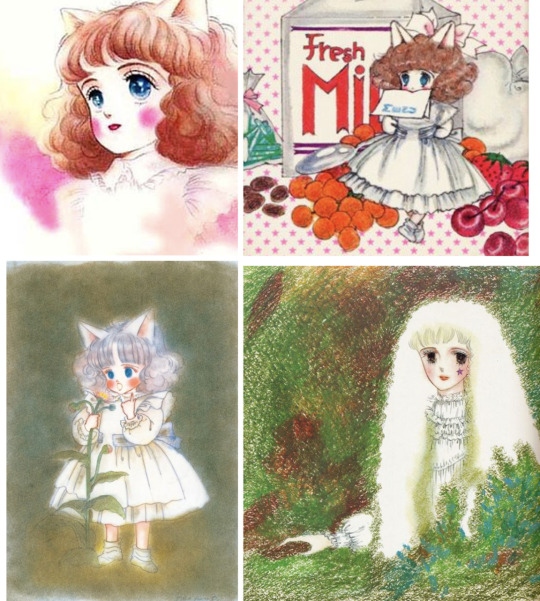
Yumiko Oshima, known for her girly art and sensitive story-telling, is the inspiration behind the otometique boom.
When asked which artist inspired them the most, both Ako Mutsu and Mariko Iwadate gave the same answer: Yumiko Oshima. Oshima, known for her quirky love stories and girly art, is an artist who trained alongside Hagio and Takemiya at the Oizumi salon and rose as part of the "Year 24 group," publishing risk-taking manga in Shogakukan and Hakusensha's magazine after a brief stint in Weekly Margaret. In other words, despite the striking differences, the origin of the "Iwadate domain" is the "Hagio domain."
While the influence of the idealized real-life romance is the one we can better observe today, contemporary shoujo would not exist if not for all these three styles meshing together and creating something new. And from that, things kept evolving and changing and gaining new forms. Because, once again, manga, and especially shoujo manga, is about reflecting the ideals of its time.
#ribon#margaret#go nagai#miki to apple pie#yumiko tabuchi#otometique#otometique manga#mutsu a-ko#mutsu ako#hideko tabuchi#70s japan#fusako kuramochi#betsuma#shoujo manga#vintage shoujo#vintage manga#harenchi gakuen#yumiko igarashi#nakayoshi#yumiko oshima
21 notes
·
View notes
Text
Year-End Poll #23: 1972

[Image description: a collage of photos of the 10 musicians and musical groups featured in this poll. In order from left to right, top to bottom: Roberta Flack, Gilbert O'Sullivan, Don McLean, Harry Nilsson, Sammy Davis Jr., Joe Tex, Bill Withers, Mac Davis, Melanie, Wayne Newton. End description]
More information about this blog here
I mentioned in a previous poll how fast culture changed in the 1970s, and that doesn't feel like an exaggeration. This was the final year of the draft and more American troops were being taken out of Vietnam. As American troops were coming home, The Today Show aired a "while you were away" segment to go over how the culture has shifted while they were overseas. Most, if not all, of this segment was a joke, but it shows that even at the time people were aware that something was changing and it was changing fast. To paraphrase historian Rick Perlstein, they left a country where The Sound of Music was the most popular movie, and they came home to a country where the most popular movie was Last Tango in Paris.
To get back to the music, it feels wrong not to shine the spotlight on Don McLean's American Pie. For one, I probably could have used the lyrics as the blurb for one of the 60's polls and saved myself a lot of time. The lyrics themselves show this changing cultural shift as well, reflecting on how aimless this new generation felt. It's hard not to put a 2020s lens on everything. But looking back at a time that was rife with political scandals and politicians not seeming to care about the rising bodycounts affecting their citizens, I'd be lying if I said the sentiment doesn't hit home. "A generation lost in space" indeed.
However, in addition to the longest song on this poll, I also want to highlight one of the shorter ones. Specifically, Joe Tex's I Gotcha. Funk music is going to continue to grow in popularity this decade, even though the full extent of that cultural movement won't always be seen on the top of the charts. But the reason I wanted to highlight this song specifically is to use it as a prelude to what's coming next. If you listen to the song, pay attention to the chorus when the rest of the instruments drop out to put more emphasis on the percussion and how Joe Tex's rhythmic vocals play against the beat.
And for my third highlight, if the artist behind the tenth song sounds familiar, that's because the song was by Mr. Las Vegas himself. Or, if any Fallout fans follow this blog (and judging by the results on some of the 50's-60's polls, I know you're here), Mr. New Vegas. Speaking of gamers, Pong debuted this year as well.
I've rewritten this section multiple times, because I don't want to gloss over a specific moment in history, but it also feels jarring to bring it up in a poll with mostly unpolitical songs. After spending a few polls talking about how the war affected the American psyche, it feels important to reinforce that the people of Vietnam didn't have to be soldiers or reporters to see the war before their eyes instead of on a television set. 1972 also marks the year of the Christmas Bombings, one of the most horrific 12-day stretches in an already horrific war. Even though I don't go over every historic moment in these descriptions, it felt wrong not to bring this up. Even as this event would result in the general population's mistrust towards Nixon and the government growing even more rapidly, it wouldn't be enough.
Nixon no longer had to worry about reelection and it felt like the entire country was holding its breath before something major happened.
#billboard poll#billboard music#1970s#1970s music#1972#roberta flack#gilbert o'sullivan#don mclean#harry nilsson#sammy davis jr#joe tex#bill withers#mac davis#melanie#wayne newton
57 notes
·
View notes
Text
Seeing as the Orientation Notebook has a few teaser images now, may as well go over them!


Transcriptions first, because the quality is very crunchy 💖
Candy Cat
"In the 1970's there was a danger of our products seeming old-fashioned, so in 1979 we launched Candy Cat as a more free-spirited character with a mischievous, even rebellious side. She loves candy! What made this design really successful was Candy's lolling tongue, which kids could roll up and put back into her mouth. Meanwhile, the hatch on her back meant you could literally stuff her with candy- or whatever you liked! She's still available to purchase in the Gift Shop today."
Bunzo Bunny
"Bunzo is a cheerful yellow rabbit who loves to celebrate birthdays and clashes his symbols together when he's excited. This toy is equipped with the ability to remember up to eight birthdays and deliver greetings on the day itself. Kids love to freak out their family and friends when Bunzo tells them when their birthday is!"
Eddie M.N. Ritterman
| Head of Research |
"Eddie has been working on new facilities here at the factory. We can't tell you much about what he's working on- he doesn't always tell us much about it!
But we're sure it will lead to great things!"
Note: "NO ONE HAS MET EDDIE. AS FAR AS I CAN TELL EVERYTHING I KNOW ABOUT HIM IS JUST RUMOURS. HE DOES EXIST THOUGH...I THINK."
❤️💛💙❤️💛💙❤️💛💙❤️💛💙❤️💛💙❤️💛
A Few things to Note/Speculation:
Firstly, the mention of putting "whatever you liked" in Candy Cat's hatch. We remember the Candy Cat cutout in Chapter 2 begging us to stop feeding it, and if I had to hazard a guess, this is a subtle nod to the fact that some of the child experiments were fed something toxic. A few of the other cutouts seem to be speaking about the childrens' experiences, so this might fit thematically.
Alternatively, this could hint at a Bigger Body Candy Cat having smaller enemies inside, or something otherwise hazardous.
And secondly, we get a bit about Candy Cat's personality. This may mean nothing at all, OR it may explain why the Prototype picked Mikayla Hyssop in particular to put under his influence. If she was paired with Candy Cat on the basis of personality (which may or may not be the case), then she might have had a rebellious streak as well- hence why the Prototype might find it easier to have her bend to his whims. If he is indeed trying to save the children, she might have been his first attempt at trying to find someone who was able to save herself and the other children via the power of his influence.
Bunzo and Eddie's sections are pretty self-explanatory for now. There may be context with Eddie I'm missing, but that will have to wait. (I've got a lot of information to re-teach myself between Poppy, Project Playtime, AND the ARG's, lol.)
#poppy playtime#candy cat#bunzo bunny#eddie m.n. ritterman#poppy playtime orientation notebook#orientation notebook
9 notes
·
View notes
Text
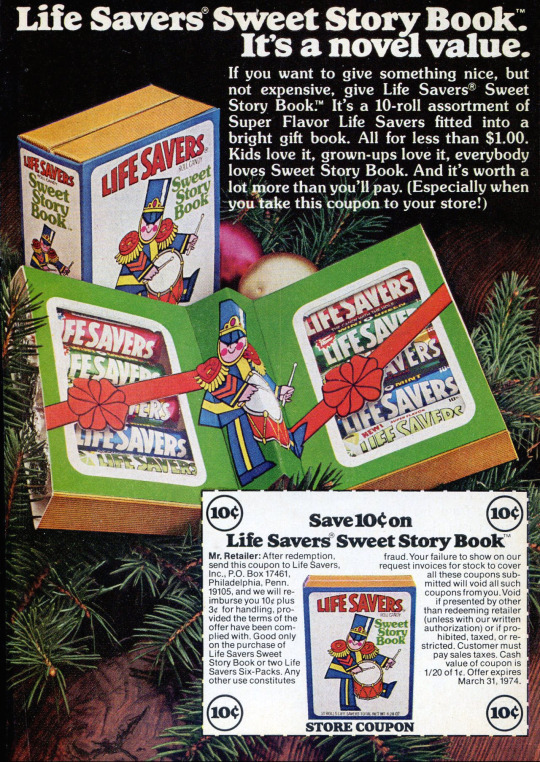
As kid always really really wanted one of these, as an adult I got one. Quite a let down.
Reader’s Digest December 1973
#1973#life savers#candy#christmas tree#vintage ad#advertising#advertisement#vintage ads#Christmas ad#Vintage Christmas#Christmas#Xmas ad#xmas#1970s#1970s ad#1970's#1970's ad#funny#humor#humour
25 notes
·
View notes
Text
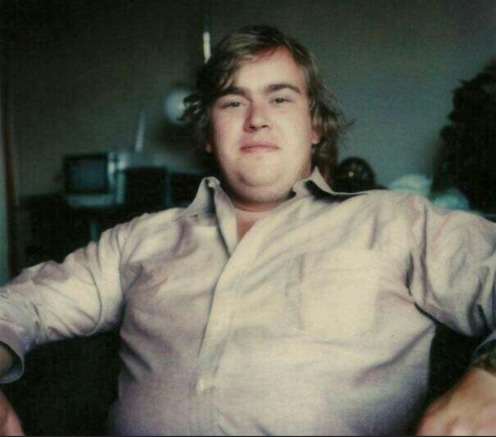
#A young John Candy in the 1970's. He would have been 72 today. Happy birthday Uncle Buck.#MaximumJones#oldschool
25 notes
·
View notes
Text
Pinoko is such an interesting character and the most relatable fictional character to me... she's a character who is very funny and has an inspiringly positive outlook on life, despite her sad situation, but so much of the comedy about her is tragic when put into perspective of her origins, but she also remains one of Tezuka's most proactive and determined heroines, who perseveres, finds joy in life, and loves with all her heart.
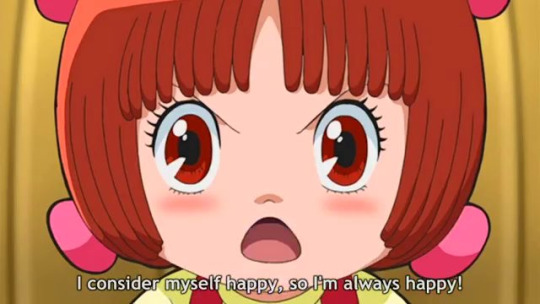
She's determined, brave, speaks her mind, has a bit of a temper, and is a bit tomboyish by 1970's Japanese standards (hence the more playful version of her theme having the subtitle ~Tomboyish Candy~), but she's undeniably female and has many feminine interests. She's a homemaker, as well as a nurse-later-doctor.
She underwent painful rehabilitation to learn how to use her new (largely prosthetic/artificial body), a clear mirror to the main character, her beloved Black Jack.

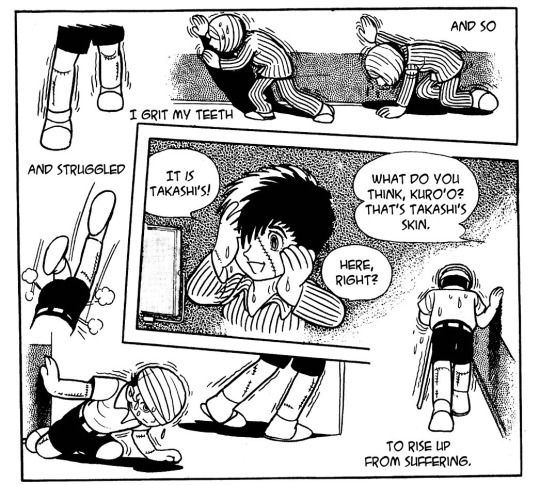
Pinoko is not a one-note tragedy, despite her love being unrequited for most of the story (our biggest hint her feelings are returned or have a chance to be are in the intended-to-be-final-chapter which ended the original run of the mnaga, The SL Called Life, and that was a dream sequence featuring the most important people in Black Jack's life from his perspective), but her character is something of a tragicomedy.
*The manga is also more clear in showing her struggles as she adjusts to her new body, having trouble controlling her bladder early on, for instance. The anime spends time on her rehabilitation, but only in flashback form (in Karte 44), as the anime set many events later, so Pinoko can be present for all of the cases, whereas the manga showed us Black Jack before Pinoko's introduction, and even after, Pinoko isn't in every chapter… it's less linear in the collected volumes, which Tezuka opted be collected by theme, not chronological order. The hazy chronology is even lampshaded in one chapter! Although I do like that Pinoko goes from 18 to 21 years old as the story goes on...
Isn't it so funny how this little kid insists she's an adult? Oh, wait, she's actually an eighteen~twenty-one year old woman who was conscious and aware of everything around her, but could not move, only listening to everything her sister heard, developing similar ideas about how a woman should be, but could not affect the world around her (except through mysterious psychic powers which seemed to vanish when she could finally control a body of her own, which she used to protect herself and to speak, but went unheard by everyone except Black Jack, the first person to speak to her as a living human being).
Black Jack himself treats her like a child for years, until finally, he becomes more aware and even corrects patients who doubt her ("She's 20 and a gifted doctor.")


Isn't it cute how she insists she loves Black Jack and is his wife? Oh, she's serious, even Black Jack looks sad when he realizes the love letter she was writing was for him... how sad!
Except later, Black Jack insists to her sister, who demands never to be contacted again, saving Pinoko's life is just a one time thing, as she's getting married... he insists to her Pinoko will someday marry too. Pinoko, who had been so upset over the idea of being saved, preferring to die in a body that matches her age, which her underdeveloped organs cannot support for more than a few days, to a life in a childlike body that doesn't... finally smiles at the idea she'll marry Black Jack and dreams of embracing him (with a body that matches her age).

"The best wife a man could want." That's how he describes her in his dream in the intended-to-be-final chapter.

Isn't it cute how she keeps a funhouse mirror in her room in the manga? Oh, she hates to see her childlike body that doesn't match her age... again, she would have gladly died in a body that matched than continue to live on in this childlike one, but the hope of a wedding keeps her going. She loves Black Jack for saving her, giving her this new life, and wants to dedicate her life to helping him.

Isn't it funny how she's so clingy and jealous and always goes BALLISTIC over pretty women around Black Jack? Her clinginess & jealousy is likely rooted in abandonment issues and trauma, being rejected by her twin who she literally lived within most of her life, who wanted her dead...
Look how quickly she becomes subdued by Tetsu's lie, after previously losing her temper and throwing dishes, how pained, then sadly accepting she looks as she smiles, realizing she's being a burden (she's not, but Tetsu believes saying this might make her give up the search for Black Jack... for her own safety). A burden is the one thing Pinoko never wants to be. She cleans up before she leaves.
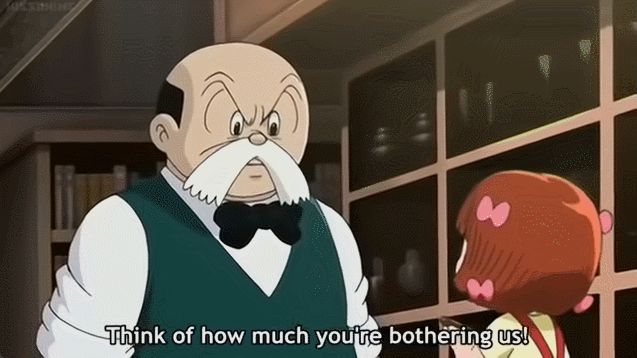
Her need to be self-sufficient in as much as she can despite disabilities (very small stature, underdeveloped nervous system, making her easily overwhelmed, as well as a speech impediment/lisp that never goes away)...
The manga, penned in the 1970's, shows Black Jack bribing schools to keep Pinoko enrolled, even if only in kindergarten, despite her meltdowns.
In the 2003 anime, reflecting better accomodations for those with disabilities... although an entrance exam is too stressful for Pinoko and causes her to be physically ill, special classes are set up just for her, meeting once a month, with custom uniforms, so she can be a high school girl like she always wanted to be.
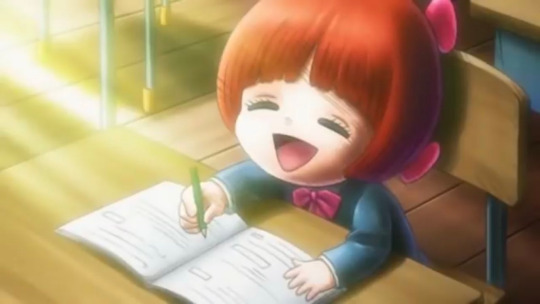
(Explaining the tags: I'm autistic, I'm not implying Pinoko is, but she's just a clearly-written-to-be-disabled character and, as many perceive me as younger or less capable because of my disability, even though I am capable, just different, with childish interests and I have a lisp too... I relate to her very strongly. That's all.)
#Pinoko#disability#actually autistic#Black Jack#JyaPino#Osamu Tezuka#this wasn't even primarily about JyaPino but they're my otp and I can't help gushing about them ffff#long post#analysis
53 notes
·
View notes
Text
12 Fic Recs for 2022
In order of how recently I bookmarked them and very much non-exhaustive. (I’m in awe of everyone who has a coherent and systematic fic tracking system. I... do not.)
Lengths are all over the place, as are ships though Blackcest and wolfstar are highly represented.
Absinthe (and a candy apple) by Anonymous (Bellatrix/Andromeda, 6k, E)
December 1970.
One of them is getting ready for war.
One of them is preparing to leave her family behind.
Neither of them knows that this is their last Christmas holiday together.
Fucked up and delightful
Buy the Stars by wilteddaisy (taotu) (Sirius/Remus, 23k, E)
Sirius Black, respectable pureblood patriarch and heir to the Black family fortune, has a wife and three children at Hogwarts. Defence Against the Dark Arts professor Remus Lupin wrestles with the aging wolf inside of him. When Black offers him a hand, Remus reluctantly takes it.
Dubious morality and Slytherin Sirius Black in the best way!!! What a wonderfully toxic relationship.
under the blood moon by @iamsiriuslyriddikulus (WIP) (Sirius/Remus, 29k+, E)
A Wizarding War has been raging for several years with no end in sight. When Lily learns how to infuse Dark Magic into her music, Remus and Lily work together to take justice into their own hands.
Murder family bluegrass band AU!! Sirius is especially hot in this. Go subscribe!
White Sheets, in the Closet (or: the earth from a great distance is perfect and whole) by @tahtahfornow (Sirius/Remus, 12k, M)
The preacher’s boy is pale and strange. Silver scar running horizontal across the crooked bridge of his nose like a tributary catching winter sunlight. Dusty freckles collecting in the corners of his cheeks. And thick fair hair that on Sundays shines with pomade, slicked behind two apricot-slice ears: sweet flesh and flesh, always at attention.
(South Georgia, 1961-1962. Hurried kisses in hostile climates.)
So powerfully atmospheric.
Shades of Dawn by @corvuscrowned (Lavender/Ginny, 3k, E)
It happens once a month — the full moon fades in the black night sky, replaced with the pink light of dawn. Ginny’s Floo sparks — vibrant green, devoured by gold and amber light. And out spills Lavender Brown.
Angsty as hell and utterly divine.
Lit Match by Phantomato (Alecto/Lily, 2k, E)
Redheads should stick together.
Canon-compliant Lily/Alecto! Go read it!
Clip, Ravel, Cleave by @vdoshu (Bellatrix/Andromeda, 15k, E)
Before Andromeda met Ted, she was a Black, through and through. While years later the story was told that she’d turned her back on her family’s dark ways, in truth, nothing was so simple.
In the beginning, it was just Andromeda and Bella. And it was just the two of them until it was too much.
One of my all time favorites. Pinnacle of wonderfully fucked up Bellatrix/Andromeda.
57th Street On Fire by Suchsmallhands (Sirius/Remus, 31k, M)
It's the 90's and springtime in New York. Remus is dealing cocaine, Sirius is looking to get high.
He felt a twinge of paranoia. He thought, This is a junkie. One way or another. You don’t take walks with people you sell cocaine to. And he might be rich. Do not say yes.
He’d never seen grey eyes quite like that before.
Maybe my favorite Muggle AU of all time? It’s so New York in the 90s and also so wolfstar and so perfect and I just fell in love with Sirius right alongside Remus.
the grace unasked for by @leftsidedown (Remus/Tonks, 18k, T)
What if… instead of going to Bill's after the Malfoy Manor, Harry and co. flee to Tonks' parents' house, where Remus and Tonks are hiding with Andromeda?
How would Remus and the others react and handle this? Remember, Tonks is in her last trimester, her dad just died, she's still being hunted down by Bellatrix and everyone is in hiding, and suddenly Undesirable No 1 shows up with a tortured Hermione, former hostages and a dead house elf and his presence is now potentially threatening everyone's safety..
Read and be converted to Remadora.
wet gray gold-lit street by basketofnovas @slashmarks (Fleur/Tonks, 10k, E)
Fleur Delacour returns to Britain after the Triwizard Tournament to work for Gringotts and spy for the Order of the Phoenix. Then she falls in love with her Order contact.
It was hard to pick one slashmarks piece but I just loved how both trope-y and canon compliant (and canon defiant) this Flonks is.
Hurt Heals by @vdoshu (series) (Andromeda/Bellatrix, Narcissa/Hermione, Narcissa/Andromeda, 17k, E)
Pain. Grief. Sorrow.
Sometimes, to suffer is to heal.
I know I’m in awe of how blindingly hot this is because it was specifically written as a gift for me and mindful of my specific kinky tastes BUT also y’all should read it too.
Nor All That Glisters by sweet_s0rr0w (Draco/Harry, 110k, E)
Lonely and frustrated on house arrest, with no prospects for the future, Draco begins brewing Felix Felicis in an attempt to improve his lot. Just in the short term, of course. He isn’t a total idiot.
But before long he finds himself with a thriving business, a nice flat, some actual (albeit irritatingly Gryffindor) friends, and a very satisfying sex life. What’s more, no-one is hexing him in the street. And Harry Potter is single, and gorgeous, and giving Draco decidedly interested looks.
Stop taking the Felix? You must be joking…
Felix Felicis addiction fic handled so perfectly. I adore the extremely imperfect Draco in this so much
61 notes
·
View notes
Photo
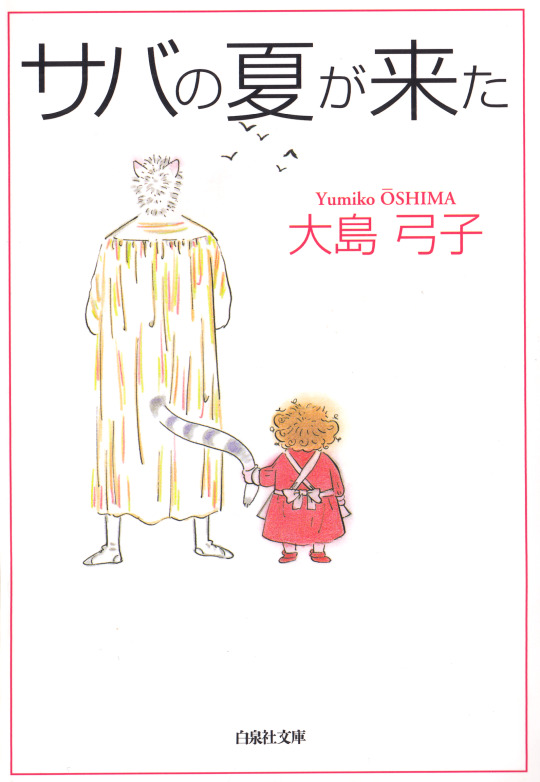
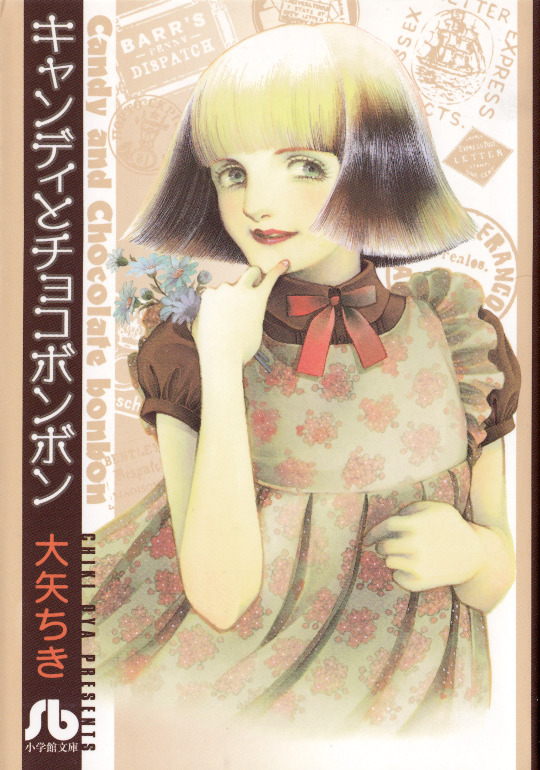


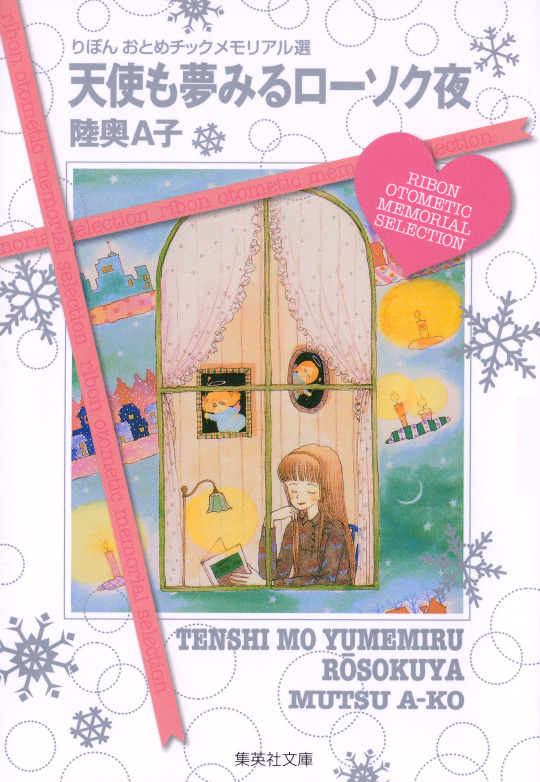
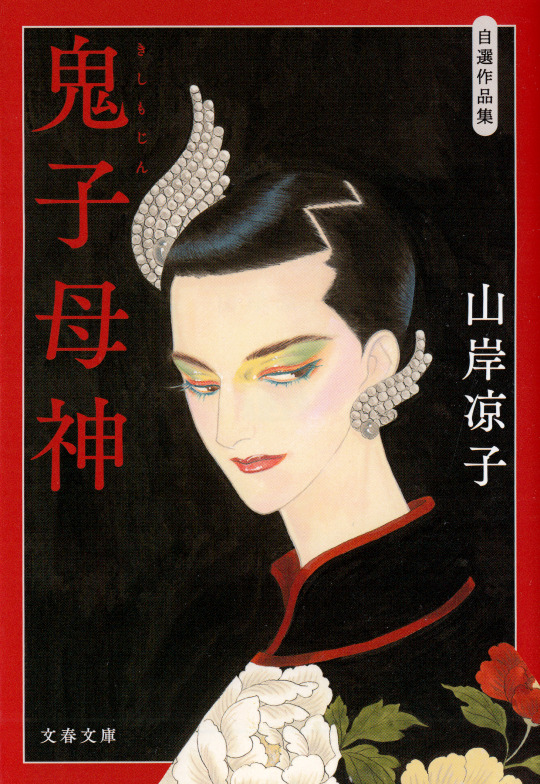
2022 YEAR ROUNDUP: FAVORITE ANTHOLOGIES I READ IN 2022
Separating the long form and short form manga I read this year.
Some one-shot anthologies I read this year that I won’t forget are:
サバの夏が来た (Sava no Natsu ga Kita) by Yumiko Oshima [Hakusensha, bunko ver]
キャンディとチョコボンボン (Candy to Choco Bonbon) by Chiki Ooya [Shogakukan, bunko ver]
青い春 (Blue Spring) by Taiyo Matsumoto [Shogakukan, bunko ver]
SFマンガ傑作選 (SF Manga Kessakusen) edited by Kenta Fukui [Tokyo Sogensha, bunko ver]
天使も夢みるローソク夜 (Tenshi mo Yumemiru Rosokuya) by A-ko Mutsu [Shueisha, bunko ver]
鬼子母神 (Kishimojin) by Ryoko Yamagishi [Bunshun, bunko ver]
I want to jump straight to my personal highlight: Kenta Fukui has amazing taste because this is one of the greatest best-of anthologies I’ve read. With a special highlight on what he calls the golden era of Science Fiction manga, the 1970′s, this selection is a perfectly even mix of male and female artists of the time who made important contributions to the Sci-fi genre. There’s too many to list here as I find them all to be very noteworthy so please take a look at its anilist page for the full details.
Speaking of the 1970′s I was able to make even more time for some of the women who got their start during that era. Such as A-ko Mutsu, who immediately captured me with “Tenshi mo Yumemiru Rosokuya”. By far her most memorable stories and a perfect introduction to the fantasy-like world she creates in all of her manga from the 70´s-80´s.
Similarly I got to dive even deeper into the world of Yumiko Oshima and it was her autobiographical work in the Sava series that truly cemented her perspective and worldview to me. In a world full of manga about nothing, the stories that in all honesty portrayed a luxuriously quiet and uneventful life deeply moved me.
Chika Ooya made the switch to the more lucrative career as an illustrator early in her career, but the manga she made before leaving the manga artist life behind is so good varied and this bunko selection really captured that range. With everything from screwball comedy to drama to surreal experiments.
On the opposite ends are the unnerving and grotesque stories of Ryoko Yamagishi. This newest best-of compilation themed around toxic mothers includes some of her well known stories like Yasha Gozen, Blue Roses, and Cosmos.
Blue Spring I was able to squeeze in at the end of the year and I already love this rough (in every sense) early years Matsumoto. Truly hope Viz decides to give this one a rerelease.
#recommendation corner#roundup#my scans#more coming. tomorrow.#there's some individual one shots i want to highlight in a later post ;)#also lots of content warnings for the kishimojin collection so feel free to ask about that if you're curious
35 notes
·
View notes
Text
William Regal x Fem Reader- "Tea for Two"
I hope people reading this fanfiction won't be offended over it, so viewer discretion is advised.
Also, even though I type and post my fanfics in patterns, where one day I'll post a fanfiction and the next day I won't, today I will be posting 3 fanfics because it's William Regal's birthday.
______________________________________________________________
Gosh, I can't imagine why anyone would accuse professional wrestling---especially the WWE/F, the most famous and iconic wrestling company in the world---of being culturally stereotypical.
Kung Funaki is an Asian man dressed in a karate outfit (and his name is a mixture of his own name and the phrase "kung fu"), Kai en Tai are a group of Asian men that chop things with samurai swords and whenever they talk their speech are out of synch with their mouths moving (like in old "Godzilla" movies), the Headshrinkers are Polynesian men in grass skirts whose manager carried a shrunken head, Tatanka was a Native American whose entrance theme started off with a Native American war cry and he ran to the ring holding a small little axe, Davey Boy Smith is a British man dressed in Union Jack themed outfits and his entrance theme is the United Kingdom's national anthem, Cryme Tyme were black gangsta thugs wearing grills in their mouths and spoke in Ebonics and robbed people, even Hillbilly Jim a stereotypical hillbilly in overalls, the list goes on and on.
When William Regal officially joined the WWF/E in the early 2000's, they made him have moments of him drinking and pouring tea into silver classy teacups and out of silver teapots probably because William Regal is British.
Even his name William Regal is meant to be a stereotype, because "regal" means things that appear to be royal, and he was probably given that wrestling name since royalty is often associated with the British (i.e. the Queen of England, Prince Charles, Princess Diana).
Granted, when William joined the World Wrestling Federation at the end of 1998, he was known as Steven Regal and they made him play a Real Man's Man, who wears sleeveless plaid shirts, does construction work and chops trees down, and they let Steven still speak with a British accent playing this gimmick.
While the Real Man's Man Steven might've been a stereotypical manly man, at least when Steven/William played the Real Man's Man that it wasn't a stereotype of British people.
There are plenty of wrestlers of various ethnicities and are from countries who don't play stereotypes of their country, and stereotypes exist for a reason.
Speaking of William Regal, does his last name make you think of something?
"Three's Company" was a very popular sitcom in the late 1970's and early 1980's---it was the highest rated show on television during its time even---and on "Three's Company" there's a bar/pub known as the Regal Beagle that the main characters often attend.
Because William Regal's name makes the Regal Beagle come to mind, and because women in the WWE/F during the 2000's and late 1990's (especially women who were more like valets and divas hired for their beauty and didn't have any wrestling training before joining the company) were reduced into being sex objects and eye candy...
On a "Smackdown" episode in 2002, William Regal was sitting backstage in his office, where he sat behind his desk where a silver tray holding a matching teapot and teacups were perched on top of his desk, amongst some other things on his desk (British flags, a small little globe).
William was quietly holding his tea cup and taking a sip from it.
You strolled into William's office dressed in a long sleeved, low cut blouse that showed off a lot of your cleavage and wore a rather short miniskirt.
When you appeared on television and walked into William's office, many male fans got out of their seats and cheered for you, although those fans weren't seen on TV, and many male fans whistled at you, giving you those "wolf whistles" as they're called.
William's eyes turned from looking at his desk to looking at you, where you slowly sauntered into his office and stopped walking once you stood in front of his desk.
His eyes were wide when he saw you stand in front of him.
"Hi" you greeted to him with a grin on your face and your voice slightly sexy when you stood in front of his desk. "Can I get you some more tea please?"
When you asked him that, you placed your hands on top of his desk and slightly leaned your chest forward, where your cleavage was falling out of the V-neck of your blouse and nearby his face.
William couldn't help but stare at your cleavage falling out of your top, and his eyes were wide and slightly raised.
Many male fans were cheering and hollering in the audience seeing your cleavage fall out of your blouse, several of these grown male fans whistling at you like how they whistle at attractive women.
William couldn't help but want more tea in his pot, especially since you're wearing a short miniskirt.
"Most definitely" he gleefully replied with a smile on his face, one of his hands offering and lending to you a silver teapot, where you took it from him.
"Thanks!" you said to him with a grin on your face, taking that teapot away from him, where you walked away from his desk and walked sideways to a place to make some tea for him.
As you were standing by another table opening the tea for him, your back was turned in front of the camera and you slightly bent yourself down forward, enough for your ass to stick out.
When your ass was sticking out, you were wearing a short little miniskirt where your panties were peeking out beneath your skirt, and the panties you wore was a thong that was buried between your ass cheeks.
Male fans in the audience cheered when they saw your panties and your ass cheeks underneath your miniskirt, and William couldn't help but turn his head and stare at your ass--especially your underwear.
While he looked at your ass, one of his fingers hooked underneath the collar of his long sleeved dress shirt and tugged and pulled his collar sideways for him being sexually aroused.
Considering that you entered his office and leaned your chest forward where your tits were falling out of your top and are wearing this miniskirt with your panties peeking out, you really shouldn't be offended over him leering at you.
In fact, since your back is turned and you're dressed in this miniskirt with your ass peeking out, it's like you want him to stare at your panties under your skirt, which you very much do.
William would no doubt prefer it if you dressed up as a sexy/slutty barmaid.
This moment of you leaning your chest forward at William Regal and your breasts nearly dangling out of your blouse (as well as you bending down and your panties peeking out underneath your miniskirt) was meant to be a tribute to some Regal Beagle moments from "Three's Company", like when one of the barmaids at the Regal Beagle was asking Jack if he'd like a beer and her cleavage was spilling out of her blouse.
There were also lots of Regal Beagle moments where barmaids had upskirt shots underneath their miniskirts.
Asking William Regal if he'd like more tea while you lean your body over and your cleavage nearly falls out of your top is just begging for breast jokes to be said by Jerry Lawler.
Like Jerry Lawler exclaiming "I bet he'd like 2 cups, I know I would!".
13 notes
·
View notes
Text
LUCY AT THE JUNCTION
"Petticoat Junction" and The Lucycoms
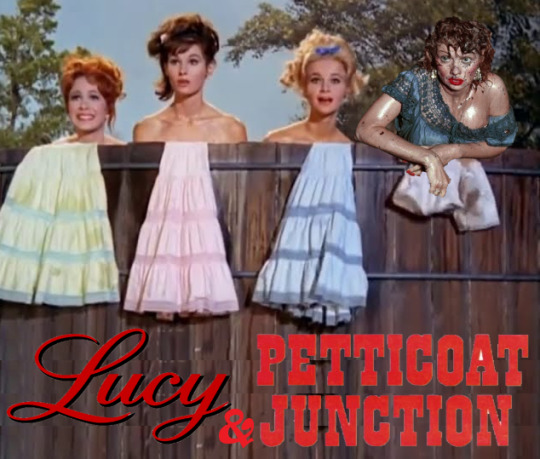
Although thematically the shows created by Lucille Ball were worlds apart from the quaint antics in Hooterville's Shady Rest Hotel, there were artistic and creative commonalities that are worth discussing.
"Petticoat Junction" ran from 1963 to 1970, while "The Lucy Show" ran from 1962 to 1968, both on CBS TV.
"Petticoat Junction" was filmed at General Service Studios, where "I Love Lucy" began filming until it moved to larger quarters.
Like Kate Bradley, Lucy Carmichael and Lucy Carter are widows raising teenage girls while trying also to earn a living, a popular trope of the 1960s and '70s.
To vary storylines, "I Love Lucy" added a dog and a baby, as did "Petticoat Junction." Animal trainer Frank Inn worked on both shows, as well as on "Here's Lucy."
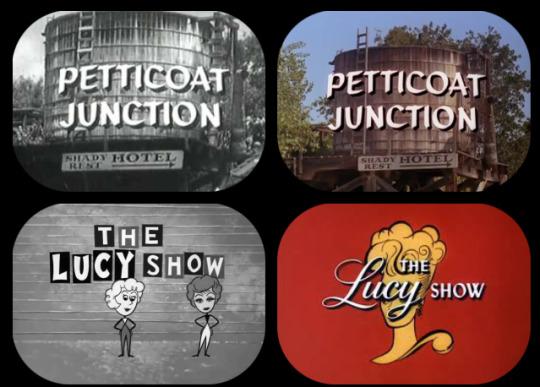
Both shows went from black and white to color in October 1965. Although "The Lucy Show" had filmed its second season in color, CBS declined to air it in color.
SHARING THE TYPEWRITER
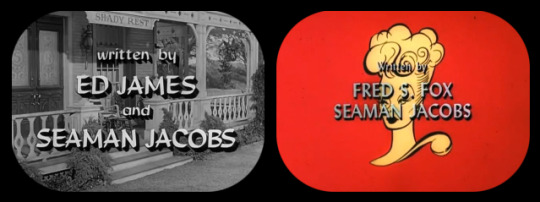
Writer Seaman Jacobs penned six episodes of "Petticoat Junction" in 1963-64 and three of "The Lucy Show" in 1967. Fred S. Fox co-wrote one of those episodes with Jacobs. Fox also wrote one 1965 episode of "Petticoat Junction." Fox's co-writer for that episode was Irving 'Iz' Elinson, who wrote a dozen episodes of "The Lucy Show."
SHARED CASTING
Their "Petticoat Junction" characters are in parentheses, followed by their Lucycom / Desilu credits.
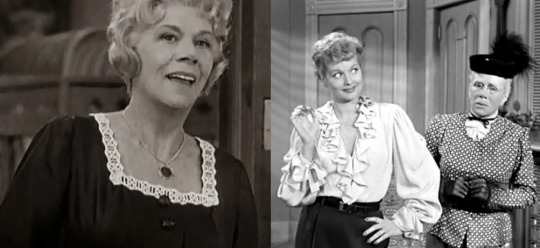
Bea Benadaret (Kate Bradley) first starred with Lucille Ball on her radio series "My Favorite Husband" (1948-1951), primarily as best friend Iris Atterbury. Benadaret was Ball's first choice to play Ethel Mertz on "I Love Lucy," but she was already contracted to play Blanche Morton on "The George Burns and Gracie Allen Show", another best friend character. Ball still managed to cast her as a one-off character, Miss Lewis, an elderly spinster, on season 1 of "I Love Lucy."
Edgar Buchanan (Uncle Joe Carson) appeared with Lucille Ball on a 1971 "Merv Griffin Show" saluting director George Marshall, for whom both worked. For Desilu, Buchanan appeared on a 1958 episode of "The Adventures of Jim Bowie" and a 1959 episode of their helicopter series "Whirlybirds".
Frank Cady (Sam Drucker) appeared for Desilu in "December Bride" (1956), "Westinghouse-Desilu Playhouse" (1959), "Guestward Ho!" (1961), "The Untouchables" (1962), "The Danny Thomas Show" (1960), "Glynis" (1963), and a 1963 unsold pilot titled "Swingin' Together."
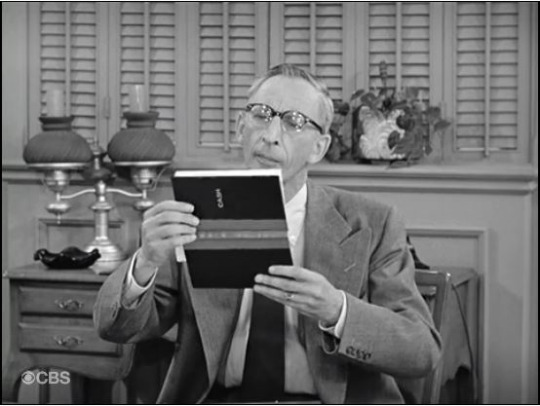
Charles Lane (Homer Bedloe) appeared in 7 films with Lucille Ball between 1933 and 1949. He was also heard on her radio show "My Favorite Husband". On "I Love Lucy," he played 4 characters and 2 more on "The Lucy-Desi Comedy Hour." He was cast as banker Barnsdahl on "The Lucy Show," but was released after 4 episodes so that Ball could hire Gale Gordon. He went from Desilu to Hooterville.
Byron Foulger (Banker Guerney / Wendell Gibbs) first appeared with Lucille Ball in the Westinghouse industrial film Ellis in Freedomland (1952). On "I Love Lucy" he played the spokesman of The Friends of the Friendless in “Lucy’s Last Birthday” (ILL S2;E25) in 1953. in 1965′s “My Fair Lucy” (TLS S3;E20) he played henpecked husband Fred Dunbar. Two years later, Foulger was back on “The Lucy Show” to play Mr. Trindle, owner of a jewelry store supposedly robbed by Lucy in “Lucy Meets the Law” (TLS S5;E19), his last appearance opposite Lucille Ball. For Desilu, he was seen in "December Bride" (1957 & 1958) and "The Untouchables" (1959).
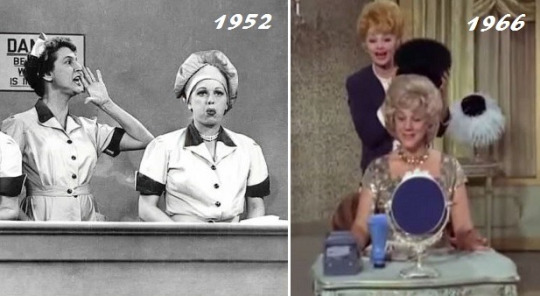
Elvia Allman (Selma Plout / Gladys Stroud / Cora Watson) was heard with Lucille Ball on "My Favorite Husband" before playing the strident Candy Factory Forewoman on "I Love Lucy." Allman returned to the show as one of Minnie Finch’s neighbors in “Fan Magazine Interview” (ILL S3;E17) in 1954 and prim magazine reporter Nancy Graham in “The Homecoming” (ILL S5;E6) in 1955. She made two appearances on “The Lucy–Desi Comedy Hour“ - first as Ida Thompson, Westfield’s PTA director, then as Milton Berle's private secretary. Allman would also be seen on two episodes of “The Lucy Show" as a customer in a department store and the manager of an employment agency. Allman’s final screen appearance with Lucille Ball reunited her with Bob Hope: “Bringing Back Vaudeville” in 1971. For Desilu, Allman was seen on "December Bride" (1954-59), and "The Ann Sothern Show" (1958).
Kay E. Kuter (Newt Kiley) made an appearance in the 1970 TV movie Swing Out, Sweet Land with Jack Benny and Lucille Ball. He was seen on "Here's Lucy" as a singing Canadian Mountie in 1971. For Desilu he was seen on "The Adventures of Jim Bowie" (1957 & 1958).
Jack Bannon (Roger Budd / 9 Others) was the real-life son of Bea Benadaret. He was briefly seen on "Here's Lucy" in 1971.
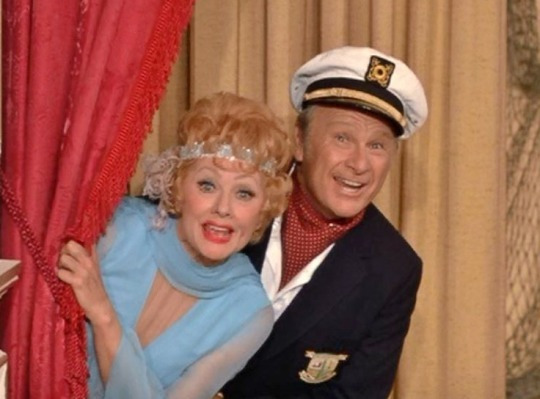
Eddie Albert (Oliver Wendell Douglas) first co-starred with Lucille Ball in The Fuller Brush Girl (1950). Albert played himself on a 1973 episode of “Here’s Lucy” titled “Lucy Gives Eddie Albert the Old Song and Dance” (HL S6;E6). He also appeared with Ball on an episode of "The Carol Burnett Show" (1968). For Desilu, he appeared on "The Westinghouse-Desilu Playhouse" (1958) and "The Greatest Show on Earth" (1963).
Eva Gabor (Lisa Douglas) played romance novelist Eva Von Graunitz in “Lucy and Eva Gabor” (S1;E7) in 1968 as well as herself in a 1972 epsidoes set in a hospital room.
Hank Patterson (Fred Ziffel) appeared in an episode of the Desilu western "The Sheriff of Cochise" in 1957, "The Westinghouse-Desilu Playhouse" (1958), "Guestward Ho!" (1961), and "The Untouchables" (1960-1962).
Barbara Pepper (Doris - aka Ruthie - Ziffel) was a Goldwyn Girl with Lucille Ball making 6 films together and becoming good friends. On the list of possible actors to play Ethel Mertz, she was in 10 episodes of "I Love Lucy" as various characters.

Roy Roberts (Norman Curtis / Game Warden Hughes) was first seen with Lucille Ball was in an uncredited role in Miss Grant Takes Richmond (1949). Roberts joined the cast of “The Lucy Show” at the start of season five, but not as the role he would become known for, bank president Mr. Cheever in 14 episodes, but as the Admiral in “Lucy and the Submarine” (TLS S5;E2) in September in 1966. Roberts returned to Lucille Ball Productions for 5 episodes of “Here’s Lucy.” For Desilu he appeared in a 1955 episode of "December Bride."
Paul Wilbur (Bert Smedley) played Mr. Wilbur, owner of the ice cream parlor, in "Lucy is a Soda Jerk" (1962). For Desilu, he was seen on a 1963 episode of "The Greatest Show on Earth."

Parley Baer (Judge Madison / Judge Turner / 3 Others) did four episodes of the radio version of "Green Acres" “Grandby’s Green Acres” starring Bea Benadaret, a summer fill-in for Lucille Ball’s “My Favorite Husband.” Baer appeared in 2 episodes of "I Love Lucy," and 5 of "The Lucy Show." On “Here’s Lucy” he played Dr. Cunningham, Harry Carter’s psychiatrist. For Desilu he was seen in "Whirlybirds," "December Bride," and "Westinghouse-Desilu Playhouse."
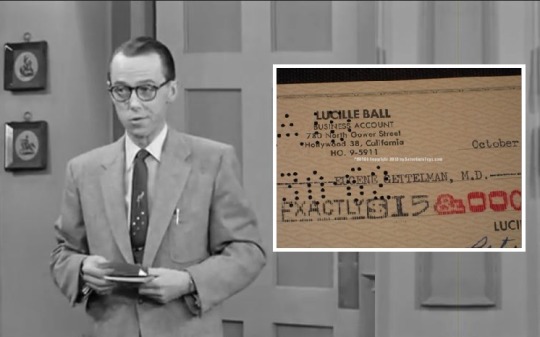
Olan Soule (Stanley Benson / 3 Others) played Little Ricky's doctor Dr. Gettelman on "I Love Lucy". For Desilu, he appeared on several episodes of "The Untouchables," "The Ann Sothern Show," and "December Bride."
Sarah Selby (Mrs. Frisby / Mrs. Grundy / 3 Others) was heard as Liz's mother on Lucy's radio show "My Favorite Husband." She played bachelorette Dorothy Cook on "I Love Lucy."
Barry Kelley (Sheriff Crandall / Hurley Feasel) played the Mayor of Bancroft on "The Lucy Show". For Desilu he appeared on "The Untouchables," "Whirlybirds," and "Westinghouse-Desilu Playhouse."

Jonathan Hole (Hank Thackery / Mr. Bunce / Mr. Earnshaw) was in 3 episodes of "The Lucy Show" and 2 of "Here's Lucy." For Desilu he was seen in "The Adventures of Jim Bowie."
William O'Connell (Martin Evans / Mr. Agnew) was seen as a Beverly Hills hotel manager on "The Lucy Show" in 1967.
Herbie Faye (Jack Stewart / Doodles / 2 Others) was in a 1968 episode of “The Lucy Show.” and 4 episodes of “Here’s Lucy”. Ball did a 1959 cameo on "Sergeant Bilko" on which he played Fender for 139 episodes. He also did an episode of "Mothers-in-Law" for Desi Arnaz.

Shirley Mitchell (Mae Belle Jennings) became friends with Lucille Ball in the late 1940s when she was featured in 4 episodes of “My Favorite Husband.” Mitchell reunited with Lucille Ball on “I Love Lucy” playing Marion Strong, member of the Wednesday Afternoon Fine Arts League.
Jean Vander Pyl (Agnes Frisby / Gladys Miller / Alice Tuttle) was heard with Bea Benadaret on Lucille Ball's radio show "My Favorite Husband." Benadaret and Vander Pyl voiced Wilma and Betty on "The Flintstones."
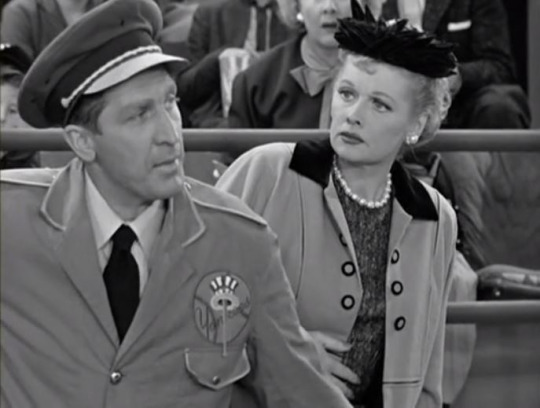
Peter Leeds (Syd Sparks / Gus Clegg) was heard on “My Favorite Husband." On "I Love Lucy" he was the reporter questioning the Maharincess of Franistan in “The Publicity Agent” (ILL S1;E31). He starred with Lucy in the films The Long, Long Trailer (1953) and The Facts of Life (1960). Leeds also appeared in “Lucy and Bob Hope” (ILL S6;E1) as well as an episode of “Here’s Lucy” in 1971.
Hugh Beaumont (Donald Elliott / Ronnie Beackman) is best known as Ward Cleaver in "Leave it to Beaver," but also appeared uncredited in Du Barry Was a Lady (1943) starring Lucille Ball. For Desilu, he was seen in "Whirlybirds".
Hal Smith (Ben Miller / 2 Others) is probably best remembered as Otis Campbell, the town drunk, on “The Andy Griffith Show” (filmed at Desilu). He appeared with Lucille Ball in the 1963 film Critic’s Choice. He was seen on 3 episodes of "The Lucy Show" and 1 episode of “Here’s Lucy” in 1972.
Maxine Semon (Mabel Snark / Lena Fenwick) played a nurse on “I Love Lucy” in “Nursery School” (ILL S5;E9) then a Yankee Stadium spectator in "Lucy and Bob Hope" (1955). She was a Las Vegas chambermaid on "The Lucy-Desi Comedy Hour".

Benny Rubin (Chief Fleeteagle / 2 Others) played the Beverly Hills tour bus driver on "I Love Lucy." He was seen on 2 episodes of "The Lucy Show." For Desi Arnaz he was seen on "The Carol Channing Show." For Desilu, he was in "December Bride."
Lurene Tuttle (Adelaide Keane / Henrietta Greene / Mary Alice Perkins) played the outgoing president of The Wednesday Afternoon Fine Arts League in “The Club Election” (ILL S2;E19) in 1953.
Burt Mustin (Grandpa Jenson) did 3 episodes of "The Lucy Show" and played a juror with Joan Rivers on "Here's Lucy." Mustin played Uncle Jeff in Mame (1974).
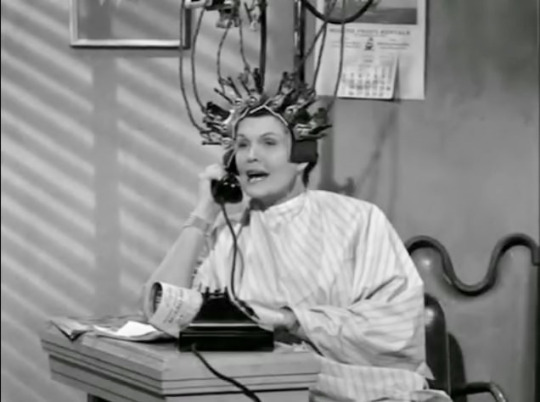
Gail Bonney (Mrs. Tomley / Mrs. Robinson / 1 Other) was seen in 2 1950 films featuring Lucille Ball. She played mother of twins Mrs. Hudson in “The Amateur Hour,” (ILL S1;E14). She also did 1 episode of "The Lucy Show" and 1 episode of "Here's Lucy."
Eve McVeagh (Miss Hammond) played Bert, Lucy Ricardo’s hairdresser, in “The Black Wig” (ILL S3;E26). She also made an appearance as a store clerk on "Here's Lucy."
OTHERS FROM LUCYLAND WHO VISITED THE JUNCTION:
Rolfe Sedan, Frank Aletter, Milton Frome, Herb Vigran, Amzie Strickland, Ray Kellogg, Bob Jellison, Frank Wilcox, Eddie Quillan, Robert Carson, J. Pat O'Malley, Florence Lake, Ernest Truex, Dorothy Konrad, George O'Hanlon, Jack Collins, Ross Elliott, Iris Adrian, William Lanteau, Joi Lansing, Bernie Kopell, Lyle Talbot, Stanley Addams, Doris Packer, Don Brodie, Frank Nelson, Rich Little, Joan Blondell, Nancy Kulp, Sid Melton, Keith Andes, Hayden Rorke, Dick Patterson, Irwin Charrone, Rudy Vallee, Lloyd Corrigan, Jackie Joseph, and Barbara Morrison.
HOOTERVILLE & THE LUCVERSE

There were several Lucycoms that took place aboard trains, but the most notable is "The Great Train Robbery" (1955). Lucy and Desi took a publicity photo in front of the infamous emergency break wearing crumpled conductors caps. On this trip, Frank Nelson played the conductor pushed to his limit by Lucy Ricardo, a role he reprised when Lucy Carmichael took the train to Washington DC in 1963.

Coincidentally, Nelson appeared on "Petticoat Junction" in 1967, but not as a conductor, as the manager of the Flamingo Room in Springdale. He has the distinction of being the only actor to play two recurring characters (Freddy Fillmore and Ralph Ramsey) on "I Love Lucy."
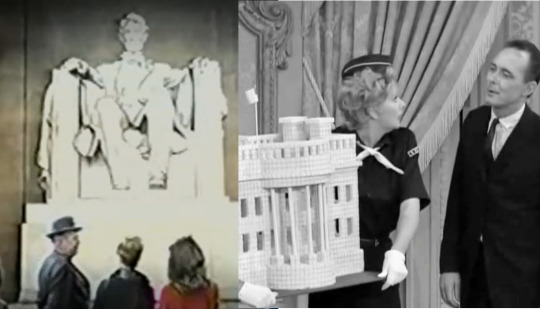
In "Joe Saves the Post Office" (1969), Joe, Janet and Bobbie Jo travel to Washington DC to talk to their Congressman. They end up meeting the President. At the time, the office was occupied by Richard M. Nixon, who is represented only by an extended hand for Joe to shake and he does not speak nor is he mentioned by name. In 1963's "Lucy Visits the White House", Lucy, Viv, and their scout troupe travel to Washington DC to present the President with a sugar cube White House. In this case, the episode mentions the President's name: John F. Kennedy. He has a few off screen lines at the end of the episode, voiced by Elliott Reid. In retrospect, both these episodes conjur unhappy memories. Kennedy was asassinated and Nixon resigned in scandal.

Hooteville's train depot can best be compared to the whistle stop of Greenview in "Lucy Visits the White House" (1963). Greenview was a remote stop located somewhere between Danfield and DC.

Bancroft, California, the small town featured in "Main Street USA" and "Lucy Puts Main Street on the Map" (1967) was a town somewhat bigger than Hooterville, but smaller than Pixley. Lucy and Mr. Mooney arrived there by train to save their main street from becoming a superhighway.

Bancroft had a general store run by Doc Putnam. It featured a large red coffee grinder, just like Sam Drucker's general store in Hooterville.
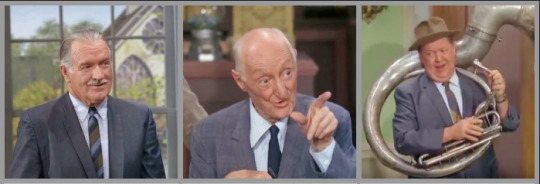
The Mayor Bancroft was played by Barry Kelley, who appeared on "Petticoat Junction" as Sheriff Crandall. Bancroft citizens included Burt Mustin, who played Grandpa Jenson in three 1968 episodes of "Petticoat Junction" and Hal Smith, who played Mr. Richardson / Ben Miller / Jug Gunderson on "Junction."
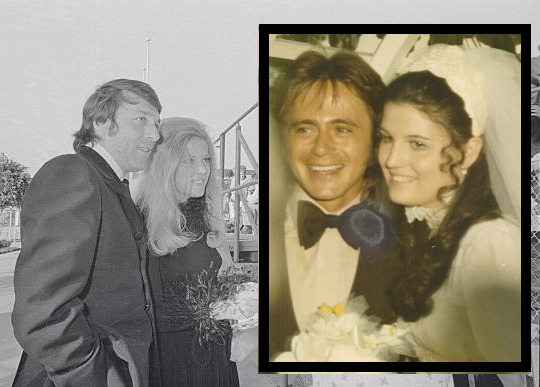
During the series' last season, the character of Jerry Roberts was introduced as a possible boyfriend for Billie Jo - until she finds out he's already married. In real life, actors Greg Mullavey and Meredith McRae were man and wife. On "Here's Lucy," Lucie Arnaz's husband Phil Vandervoort was also part of the cast. Sadly, both marriages were short-lived.
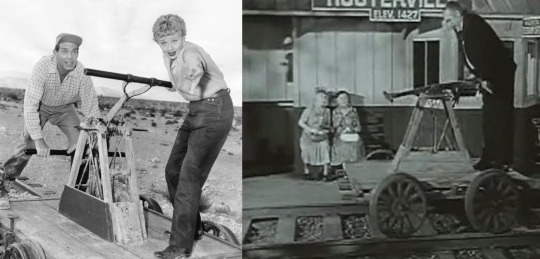
A railroad handcar was prominently featured in "Lucy Hunts Uranium" (1958) featuring Fred MacMurray. In Hooterville, it was generally manned by Homer Bedloe (Charles Lane), who was also featured as a Claims Officer in "Lucy Hunts Uranium." Also in the hour-long "Lucy-Desi" episode Bob Jellison plays a Las Vegas bellboy. In Hooterville, Jellison played a salesman in 1968 and Ben Miller in 1970, the 4th and final actor to play that role. That episode also featured Lucyverse performers Sarah Selby and Parley Baer. It was directed by Elliott Lewis, producer of "The Lucy Show" and Desi Arnaz's "Mothers-in-Law" as well as husband of Lucy sidekick Mary Jane Lewis.
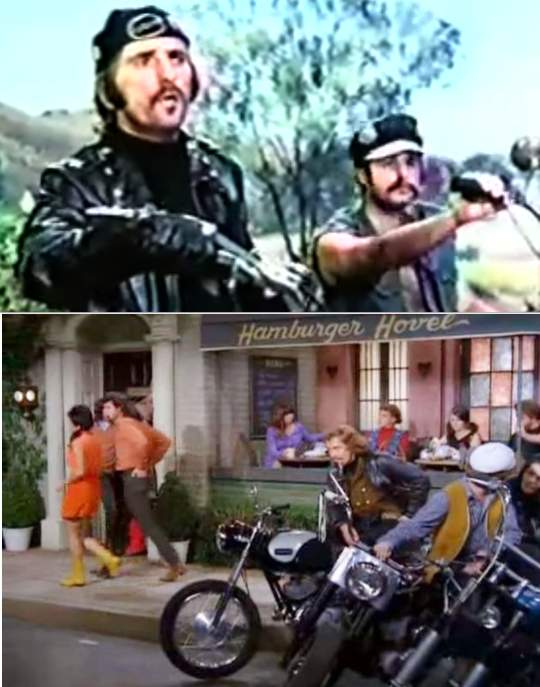
In 1969's "One of Our Chickens Are Missing" (S7; E4) of the final season, Hooterville is plagued by chicken thieves in the former of a biker gang. Harry Dean Stanton plays Ringo, who is 'saving up for a pillow'. Lucy and Viv also encounter biker gangs in a 1967 episode of "The Lucy Show" set on the notorious Sunset Strip.
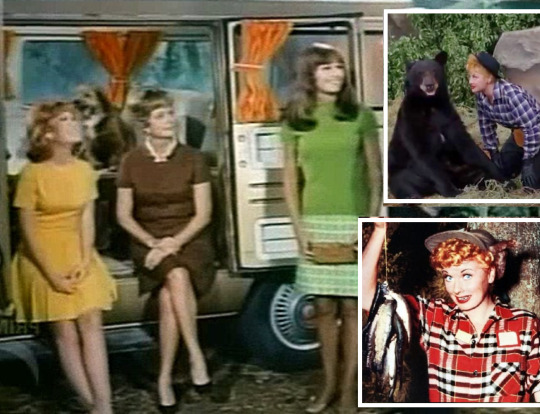
In 1969's "The Camping Trip" (S7;E5), the entire family packs up and goes camping in the woods. They go fishing and Uncle Joe comes face to face with a bear, "The Camping Trip" was also the title of a 1953 episode of "I Love Lucy" where Lucy and Ricky also go fishing. In "The Lucy Show's" "Lucy Becomes a Father" (1964) Lucy Carmichael also comes face to face with a bear.

"Goodbye, Mr. Chimp" (S7;E12) introduces a chimpanzee to the Shady Rest. Uncle Joe buys the chimp as a gift for his infant niece. Two years earlier on "The Lucy Show," Lucy Carmichael also featured a chimp - actually three - in "Lucy The Babysitter". The popularity of chimpanzees on sitcoms can be attributed to The Marquis Chimps, the (non-human) stars of the sitcom “The Hathaways” (1961-62) in which a suburban couple kept three performing chimps as their children.

The iconic Shady Rest Hotel is reminiscent of The Eagle Hotel, where Lucy and Ricky stayed in "The Marriage License" (1952). Running the Eagle Hotel are Mr. and Mrs. Willoughby (played by Irving Bacon and Elizabeth Patterson), who are reminiscent of Uncle Joe and Kate Bradley, who run the Shady Rest. In season one, Uncle Joe schemes to market the Shady Rest as a 'honeymoon hotel.'
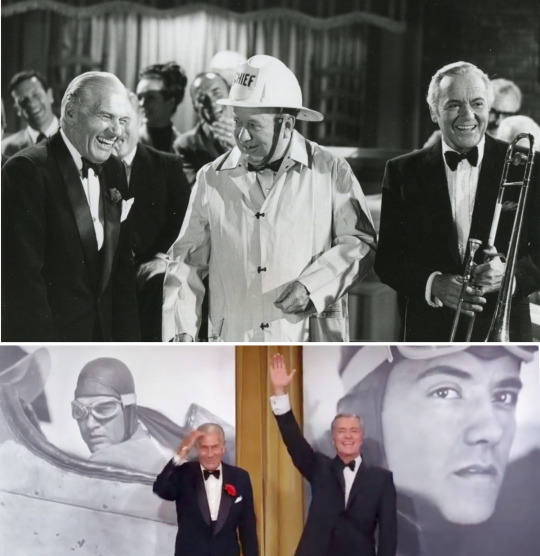
Richard Arlen and Charles 'Buddy' Rogers, the stars of the 1929 silent film Wings, the first film to win an Academy Award, were guest stars as themselves on both "Petticoat Junction" (1968) and "The Lucy Show" (1967). Both appearances revolved around their appearance in the film.
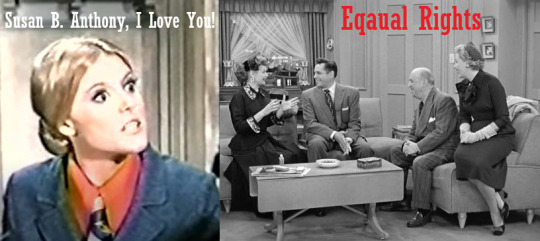
The Equal Rights Amendment (ERA) was introduced in 1923 by the nephew of suffragette Susan B. Anthony. Thirty years later "I Love Lucy" tackled female equality, culminating in the boys insisting the girls pay their own dinner checks. In 1967 The National Organization for Women (NOW), pledged to fight tirelessly for the ratification of the ERA. On February 7, 1970, "Petticoat Junction" finally got around to the subject by inventing WITCH (Women In True Cultural Heritage) and having Billy Jo storm a barber shop in tailored suit. That same month, twenty NOW leaders disrupted hearings of the Senate Subcommittee on Constitutional Amendments, demanding the ERA be heard by the full Congress.
"Petticoat Junction" and "The Lucy Show" were both part of a DVD set titled The Best of Family TV.
#Lucille Ball#Petticoat Junction#The Lucy Show#CBS#TV#Bea Benadaret#sitcoms#1960s#Hooterville#Train#Hotels#Frank Nelson#Shirley Mitchell#I Love Lucy#Here's Lucy
6 notes
·
View notes
